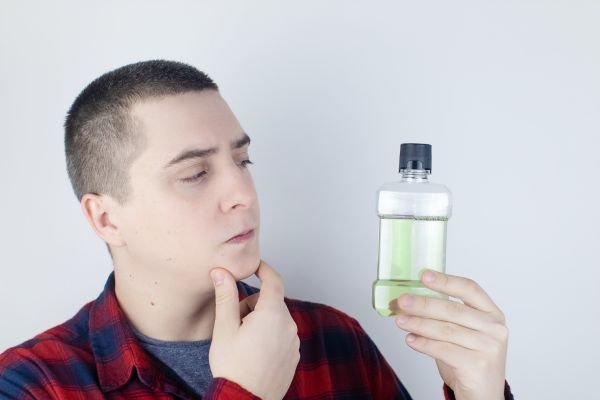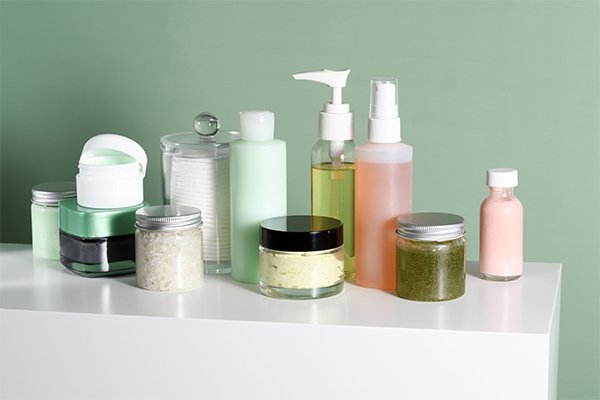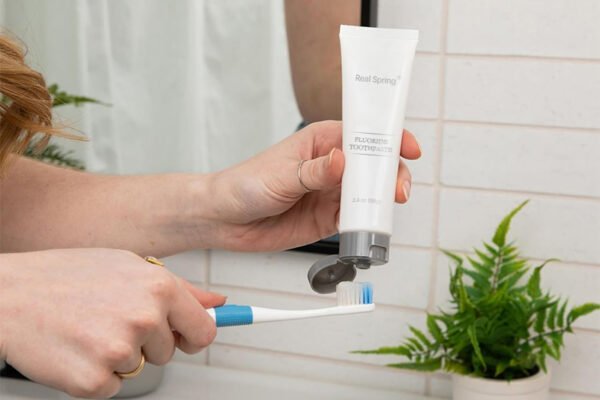Innehållsförteckning
Ever wondered how your bathroom shelf’s mouthwash goes from raw materials to something you can trust to freshen breath and keep your mouth healthy? It’s not just a simple liquid mix—there’s a sequence of careful steps, each ensuring the end product is safe, effective, and true to its promises. Let’s walk through the mouthwash manufacturing process, from start to finish, and see how small details matter for a reliable product.

I. Pre-Production Preparation: Laying the Foundation for Quality
Pre-production is the initial phase that determines the quality and safety of the final mouthwash product. It involves sourcing high-quality raw materials and developing a precise formula, both of which are critical for subsequent manufacturing steps.
1. Sourcing and Testing Raw Ingredients
The first hurdle for any mouthwash raw material sourcing team is obtaining high-quality raw ingredients. These basics define the final product—if they’re poor, the whole process fails. Common ingredients include water, alcohol (or alcohol-free alternatives), flavorings, active ingredients like fluoride or chlorhexidine, preservatives, and a touch of sweetener. But origin matters too, a key consideration.
(1) Selecting Reliable Suppliers
Not just any munvatten supplier will do. Good manufacturers only work with suppliers who can prove their ingredients are pure and come from reliable sources. For example, water used in mouthwash isn’t the same as tap water. It goes through a multi-step purification process: first, sediment filters remove large particles like sand or dirt, then activated carbon filters get rid of chemicals like chlorine, and finally, reverse osmosis membranes filter out even tiny impurities, leaving water that’s 99.9% pure. Alcohol, if included, is pharmaceutical-grade, which means it’s been distilled multiple times to remove any traces of methanol or other harmful substances—you wouldn’t want anything in your mouth that could make you sick.
(2) Conducting Rigorous Ingredient Tests
Once all the ingredients are gathered, they get put through a bunch of tests. Labs check to make sure they’re pure, strong enough to do their job, and free of anything that could mess things up. For instance, fluoride is tested to ensure its concentration is between 0.05% and 0.2%—low enough to be safe for daily use but high enough to strengthen tooth enamel. Flavorings are checked for allergens, like traces of nuts or gluten, to avoid triggering reactions in sensitive users. Even preservatives like sodium benzoate are tested to make sure they’re within safe limits—too much could irritate the mouth, too little and the mouthwash might spoil quickly.
2. Formulation Development
After ingredients pass tests, scientists and chemists craft the exact recipe. They balance efficacy, taste, texture, and shelf life—more like gourmet cooking than mixing a drink, with every ingredient in perfect proportion.This stage is what we call mouthwash formulation development, and it’s more like cooking a gourmet meal than mixing a drink, with every ingredient in perfect proportion.
(1) Precise Measurement of Active Ingredients
Active ingredients are measured out precisely, often using scales that can weigh down to a milligram. Fluoride, for instance, is added to strengthen tooth enamel, but too much can cause fluorosis, a condition that stains teeth. So chemists calculate exactly how much to add based on the size of the bottle—you’ll find less fluoride in a travel-sized 100ml bottle than in a 500ml family pack, but the concentration remains consistent. Chlorhexidine, an antibacterial agent, is usually kept at 0.12% because higher concentrations can stain teeth or cause a bitter taste.
(2) Balancing Flavors, Sweeteners, and Preservatives
Flavors like mint or citrus are picked to cover up the taste of other ingredients—no one wants to swish something that tastes like chemicals. But even flavorings need to be balanced. Peppermint oil is popular, but it’s strong, so it’s often mixed with a little spearmint to mellow it out. Sweeteners like xylitol are added sparingly—they not only make the mouthwash taste better but also help fight bacteria, though too much can make it taste syrupy. Preservatives are a must too; they stop bacteria and mold from growing, so the mouthwash stays safe to use. Sodium benzoate is a common choice, but it works best in acidic environments, so chemists might adjust the pH of the mouthwash to around 4.5 to 5.5 to make it effective.
II. In-Production Operations: Turning Formula into Product
With the recipe set, ingredients are combined in large tanks, ensuring even distribution (so every swish works). This is a key part of the mouthwash production process, and it’s done with machines more precise than humans.

1. Mixing and Blending
With the recipe set, it’s time to start mixing. The ingredients are combined in big tanks, and everything has to be just right to make sure they’re evenly spread out—that way, every sip (or swish) works as well as the last. This step uses mixing equipment that can handle huge volumes, with settings calibrated to avoid foaming or uneven blending.
(1) Following the Correct Ingredient Addition Order
There’s a specific order to adding things. Water usually goes in first, heated to a specific temperature—around 30°C for most formulas—because some ingredients dissolve better in warm water. Then liquids like alcohol and flavorings are pumped in, followed by preservatives, which need to be mixed well to ensure they’re spread throughout the batch. Powdery ingredients, such as fluoride or sweeteners, are mixed with a little water first to make a slurry—this keeps them from clumping up in the big tank, which would mean some parts of the mouthwash get too much of an ingredient and others get too little.
(2) Controlling Mixing Equipment and Conditions
The equipment used can handle huge amounts—some tanks hold 5,000 liters or more, which is enough to fill over 10,000 small bottles. Mixing can take a few hours, with giant paddles spinning at just the right speed—too fast and the mixture might foam up, too slow and ingredients won’t blend properly. While it’s mixing, they keep an eye on the temperature and pH level. If the temperature rises above 35°C, some active ingredients like chlorhexidine might break down. If the pH is off, it could make the mouthwash unstable or irritate your mouth. So they check every 15 minutes, adding a little citric acid or sodium hydroxide for pH adjustment if needed, until it’s exactly where it should be.
2. Quality Control Checks During Production
Checking quality isn’t a one-and-done thing—it happens all through the process, especially while mixing. Every so often, a technician dips a small sample cup into the tank to test how evenly mixed it is, what the pH level is, and if the active ingredients are at the right strength. If something’s not right, they fix it right away. This is also an important aspect of the mouthwash production process, and it’s why you rarely find a bad batch of mouthwash on store shelves.

(1) Real-Time Adjustment of Key Indicators
For example, if a sample shows the fluoride level is 0.18% instead of the target 0.2%, they’ll calculate exactly how much more fluoride to add to the 5,000-liter tank to hit the mark. If the pH is 6.0 instead of 5.0, a little citric acid is added to bring it down. They also check the viscosity—how thick or thin the mouthwash is. If it’s too thick, it might be hard to pour; too thin, and it might not stay in the mouth long enough to work. So they add a little more glycerin to thicken it or a little more water to thin it out, until it’s just right.
(2) Recording and Handling of Test Results
These checks are done every hour, and every sample is logged with the time and results. If a batch fails a test, it’s put on hold until the problem is fixed. In rare cases, if it can’t be fixed, the whole batch is discarded—better to waste a little than to put a bad product on the market.
3. Filtration and Purification
Once everything is mixed, the mouthwash needs to be filtered and cleaned up. This gets rid of any tiny particles or bits that might have gotten in during mixing—like a stray piece of dust or a clump of undissolved powder. No one wants to see floaties in their mouthwash, and it also helps keep the texture smooth. This step is part of the ongoing mouthwash production process, and it’s more high-tech than you might think.
(1) Multi-Stage Filtration
Multi-stage filtration for mouthwash uses filters of decreasing pore size: coarse (5-micron) for large debris, fine (1-micron) for smaller particles, and ultra-fine (0.2-micron) for clear formulas. Some use ultrafiltration membranes to trap bacteria—adding safety.
(2) Removing Dissolved Gases via Deaeration
Sometimes they also remove dissolved gases, a process called deaeration. If there’s too much oxygen in the mouthwash, it can cause the liquid to turn cloudy over time or make the bottle expand. So the mouthwash is pumped through a vacuum chamber, which pulls out the gas bubbles. You might not notice this step, but it’s why your mouthwash stays clear from the first use to the last.
III. Post-Production Processes: Preparing for Market Launch

1. Bottling and Packaging
After filtering, the mouthwash is ready to be put into bottles. This part is what’s known as mouthwash bottling and packaging, and it’s mostly done by machines, which can fill hundreds of bottles every minute—far faster than any human could. But speed doesn’t mean cutting corners.
(1) Cleaning and Sterilizing Bottles
First, the bottles are cleaned and sterilized. They’re run through a machine that sprays them with hot water (80°C or higher) to kill any germs, then dried with filtered air to make sure no water is left inside.
(2) Accurate Filling and Capping
Then the mouthwash is pumped in, with sensors that measure exactly how much goes into each bottle—if a bottle is underfilled by even 5ml, it’s rejected. Overfilled bottles are rejected too, because they might leak when capped. Next, the bottles get capped. The caps are fed into a machine that screws them on at just the right tightness—too loose and they’ll leak, too tight and you’ll struggle to open them. For bottles with flip-top caps, another machine checks to make sure the cap flips open and closed smoothly.
2. Final Quality Control and Testing
Before shipping to stores, mouthwash passes one last test round—done by strict quality control teams, the final “check” in the mouthwash manufacturing process.
(1) Testing Product Performance and Stability
Samples from each batch are checked for things like pH, how thick it is, and if the active ingredients are at the right level. They also conduct product stability testing—samples are stored in ovens set to 40°C (about the temperature of a hot car) for a month to see if the mouthwash separates or changes color. If it does, the batch is rejected. Another sample is stored in a fridge at 4°C to make sure cold temperatures don’t affect it either.
(2) Inspecting Packaging Quality
The packaging gets a once-over too. They check that bottles are sealed properly by turning them upside down for 10 minutes—if any liquid leaks out, the cap isn’t tight enough. Labels are checked to make sure they’re straight and that all the text is readable. Even the boxes are tested—they’re stacked with weights on top to make sure they can handle being shipped and stored without collapsing. If anything fails these tests, it gets pulled aside—either fixed (like re-capping a loose bottle) or thrown away. It’s strict, but it’s how manufacturers make sure you get a product that works every time.
3. Distribution and Storage
Once approved, mouthwash is loaded onto temperature-controlled trucks (15–25°C—too hot breaks down ingredients, too cold thickens liquid)—temperature control is a final requirement of the mouthwash manufacturing process. Trucks are tracked via GPS, so manufacturers monitor their products—visibility that’s part of the modern mouthwash manufacturing process.
(1) Warehousing and Inventory Management
When they arrive at warehouses, the boxes are stacked on pallets, away from direct sunlight and heat sources like radiators. Warehouses also keep the humidity low—around 50%—because too much moisture can make the boxes moldy. The mouthwash stays here until stores place orders, then it’s shipped out again, this time in smaller trucks, to local pharmacies, grocery stores, and online warehouses.
(2) Guiding Consumer Home Storage
Storing it right at home is important too. Once you buy a bottle, keep it in a cool, dry place—your bathroom cabinet is fine, but don’t leave it on a windowsill where the sun can heat it up. And make sure to close the cap tightly after each use, so the ingredients don’t evaporate or get contaminated.
lV. For Brands: Partnering with Manufacturers
Other flexible models exist too: contract mouthwash manufacturing lets you provide raw materials while the manufacturer handles production; turnkey mouthwash manufacturing solutions offer a one-stop experience, covering everything from formula R&D to finished goods delivery; and a bulk mouthwash manufacturer is ideal for brands needing large-volume orders. For brands wanting both product design and production in a single partnership, an ODM mouthwash manufacturer (original design manufacturer) creates both the product and its design. And if you need pure production outsourcing, an OEM mouthwash manufacturer (original equipment manufacturer) takes on full manufacturing for your brand. These options ensure brands can align products with their vision, whether targeting niche audiences or mass markets.
V. Summary
Making mouthwash through the mouthwash manufacturing process is a complicated, rule-bound task. Every step—from sourcing ingredients to shipping to stores—is closely monitored to ensure the end product is safe, effective, and reliable. The mouthwash manufacturing process leaves no room for shortcuts, and that’s why the small bottle on your shelf works every time you swish.


-600x400-c.jpg)




